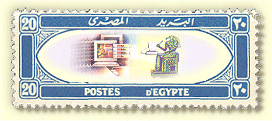

| Report of the November 10 meeting Sami Sadek, TPOs and Railways | |
| The Chairman welcomed those present, and especially our overseas visitors, Dr Sherif Samra (ESC 311) and
Vahe Varjabedian (ESC 390), and looked forward to the meeting, for which Dr Sadek (ESC 559) has made enormous research to update the classic book of
the late Peter Smith, now – astonishingly - 25 years old!
Twelve members attended; there were apologies for absence from ten members The Secretary noted that the Treasurer felt it time to step down after 13 fruitful years in charge of our monies, and the meeting decided that it would be appropriate to make a change just after the holiday season – so please continue sending your subscriptions to Brian Sedgley. Wearing his Auctioneer’s hat, he also reported the November Auction a success, with 42 of 46 bidders winning lots, an £11,500 turnover, and a commission for the ESC of well over £1000, after postage charges driven high by sales of books. Just over 50 per cent of the material was sold, realising almost £8,000 for Peter Andrews’ family. There will be a further auction based on the Andrews collection in the springtime.
Just three of the newly discovered
Alexandria-Cairo TPO types.
Dr Sadek paid tribute to Peter Smith and explained that it had been possible to move beyond his book because several new research
areas had come to light, including particularly train timetables revealing not only the infinite efficiency of the Egyptian Railways
of the period but also the infinite intricacy of the network of mail trans, national and local, throughout the country. He explained
that though many new types of postmark had been discovered, we shall abide by Professor Smith’s wishes and not change the basic numbering
of types, which has become well established.
|
|
|